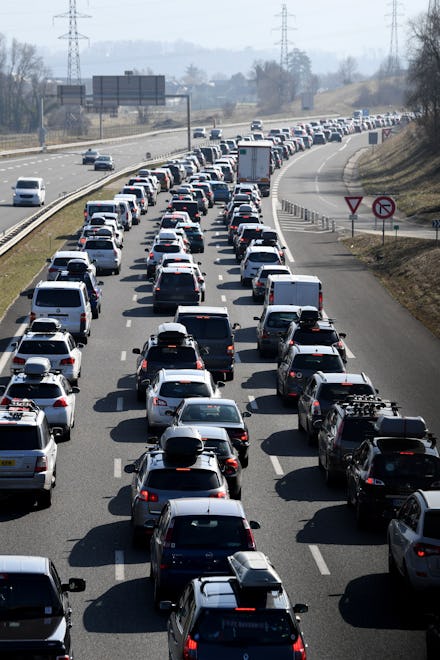Just a few self-driving cars on each road could help curb America’s traffic problem

Across the United States, roads fall victim to "phantom traffic jams," a phenomenon of human nature. It's when drivers cause stop-and-go traffic, even when there's no reason for it. But as self-driving cars reduce the number of human calculations made on the road, traffic may also start to dwindle, according to a recent study.
In Tucson, Arizona, a team of engineers placed an autonomous car on a circle track with at least 20 human-driven cars. They set controls on the autonomous car's speed and found that it was able to smooth traffic on the track, regulating human drivers for the better and reducing total fuel consumption by about 40%.
"Our experiments show that, with as few as 5% of vehicles being automated and carefully controlled, we can eliminate stop-and-go waves caused by human driving behavior," Daniel B. Work, assistant professor at the University of Illinois at Urbana-Champaign, said in the study's release.
The end of traffic
Drivers may not need to wait for a future where all cars are self-driven — just one or a few on the road could reduce congestion. An estimated 10 million self-driving cars could be on the road by 2020, according to a report published in Business Insider, but that would mean a drastic uptake in the next three years. It's hard to know how many will truly take to the streets so quickly.
"Stop-and-go traffic is an incredible problem, and I could see autonomous vehicles helping to alleviate that simply because the computers are making the decisions," said Brooks Rainwater, director of Center for City Solutions in Washington, D.C. "But it's going to really depend on what is the critical mass of autonomous vehicles on the street, and I think even 5% could push us in that direction."
Rainwater estimates that autonomous vehicles will "take off within our densest cities" in the next three to five years.
In the meantime, the experiment still needs to be replicated in other environments before drivers get too excited. Researchers need to see how autonomous vehicles will affect denser traffic, with humans changing lanes beyond the ease of a circle track.